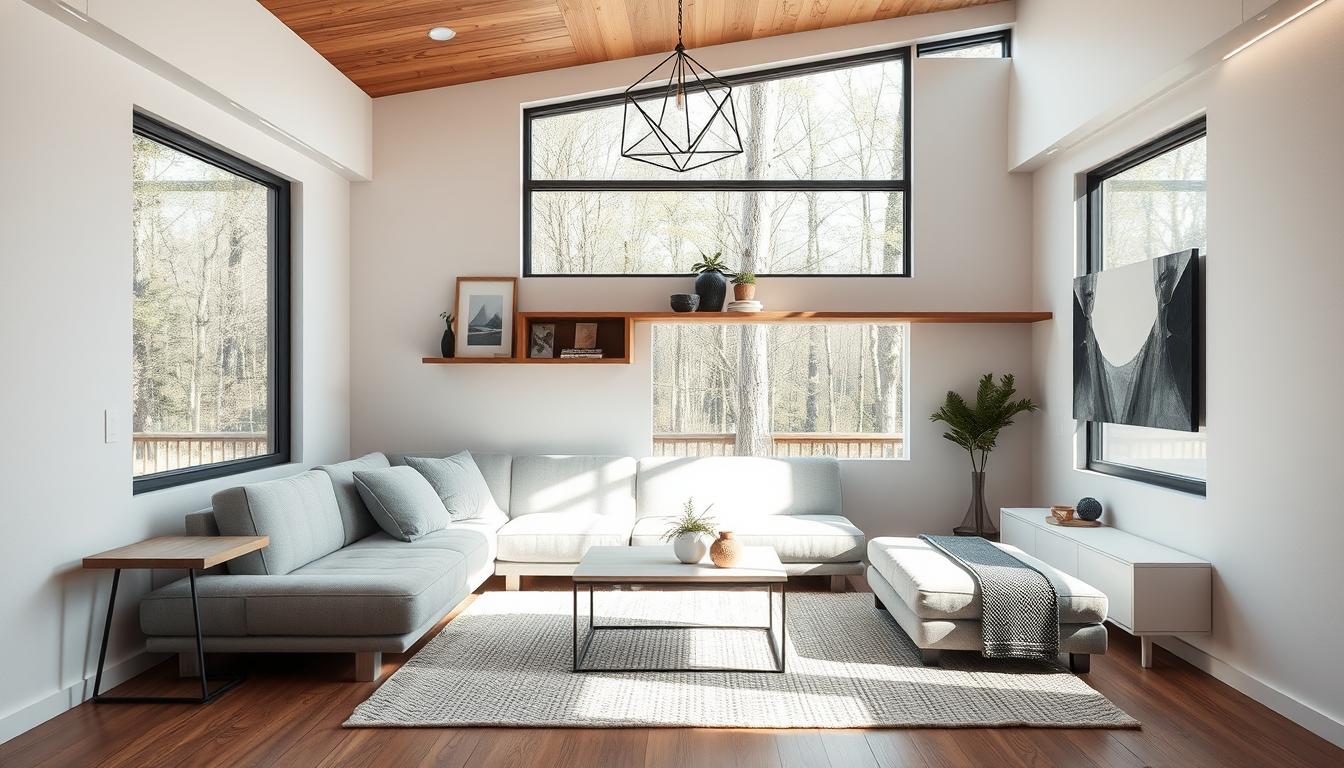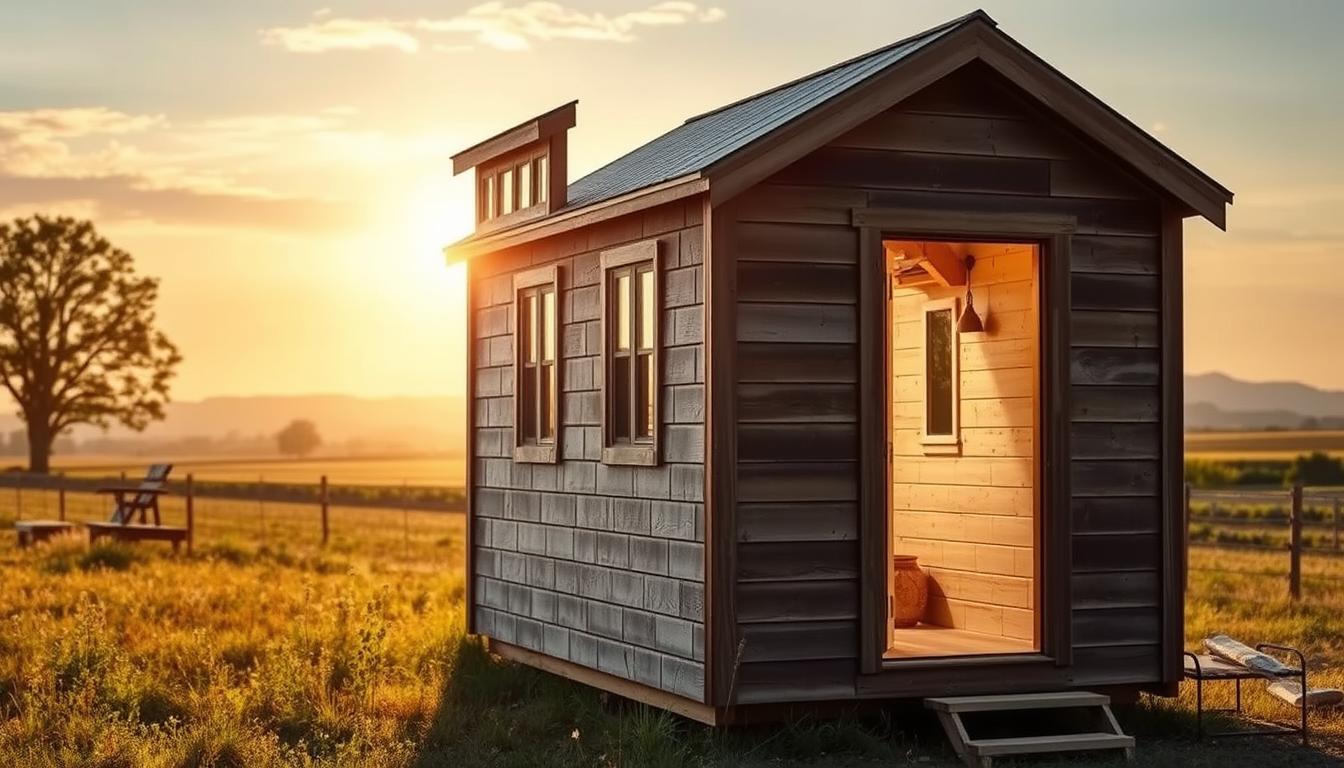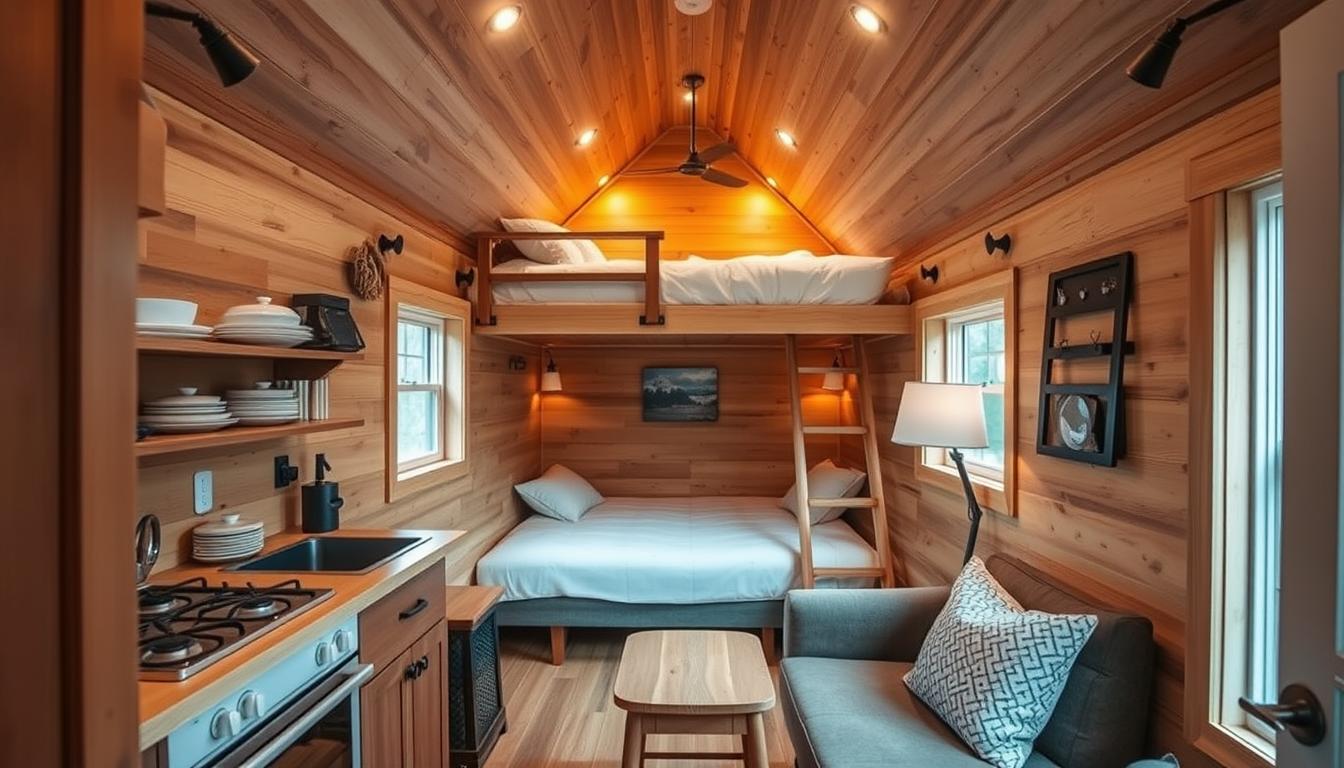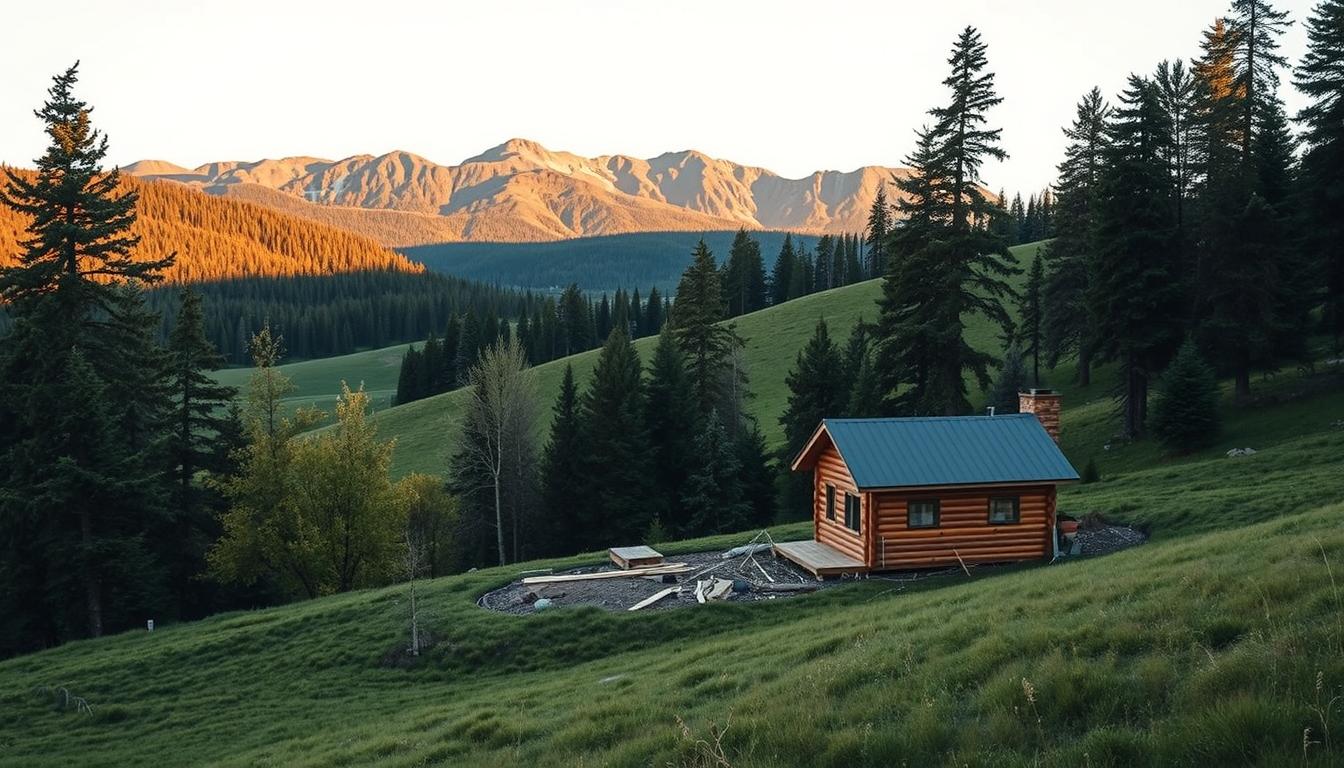Looking for ways to make the most of your tiny house interior design? You’re in the right place. In this article, we’ll explore the principles of designing a functional and aesthetically pleasing living space in a tiny house. We’ll cover everything from maximizing space and incorporating storage solutions to choosing multi-functional furniture and utilizing vertical space. Whether you’re a minimalist at heart or simply looking to downsize, these tips and ideas will help you create a beautiful and practical tiny home.
Principles of Tiny House Interior Design
When designing a tiny house interior, it is important to maximize the use of space, incorporate storage solutions, choose multi-functional furniture, and utilize vertical space. Let’s take a closer look at each of these principles.
Maximizing the Use of Space
In a tiny house, every inch of space counts. To maximize the use of space, consider using built-in furniture, such as a bed that doubles as a sofa or a table that folds down from the wall. You can also use furniture that can be easily moved or stored away when not in use. For instance, a foldable chair or a stool that can be stacked on top of each other.
Incorporating Storage Solutions
Storage is key in a tiny house. Look for creative ways to incorporate storage, such as under-bed storage, built-in shelves, or hanging organizers. You can also use furniture that doubles as storage, such as a storage ottoman or a coffee table with hidden compartments. Additionally, you can use the space under the stairs to create storage cabinets or drawers.
Choosing Multi-Functional Furniture
In a tiny house, every piece of furniture should serve multiple purposes. Look for furniture that can be used in different ways, such as a dining table that can be used as a desk or a sofa that can be converted into a bed. You can also use a Murphy bed that can be folded up during the day to create more living space.
Utilizing Vertical Space
In a tiny house, vertical space is just as important as horizontal space. Look for ways to use the walls for storage, such as hanging shelves or using a pegboard. You can also use loft beds or mezzanine levels to create more living space. Additionally, you can use a ceiling-mounted pot rack to store pots and pans, freeing up cabinet space.
Minimalist Design Principles for Tiny House Interiors
When designing a tiny house interior, minimalist design principles can be especially helpful. By simplifying the color palette, using natural materials, emphasizing functionality over aesthetics, and creating a sense of openness and flow, you can create a beautiful and functional living space in a tiny house.
Simplify the Color Palette
In a tiny house, a simple color palette can help create a sense of calm and spaciousness. Stick to neutral colors, such as white, beige, or gray, and use pops of color sparingly. This will help to create a cohesive and harmonious look throughout the space.
Use Natural Materials
Natural materials, such as wood, stone, and metal, can add warmth and texture to a tiny house interior. Look for furniture and decor made from natural materials, and consider using reclaimed materials for a more sustainable approach. This will help to create a connection with nature and bring a sense of calmness to the space.
Emphasize Functionality over Aesthetics
In a tiny house, functionality should always come first. Choose furniture and decor that serve a purpose, and avoid anything that is purely decorative. This will help to maximize the use of space and ensure that every item in the house has a specific function.
Create a Sense of Openness and Flow
In a tiny house, it is important to create a sense of openness and flow. Use furniture and decor to define different areas of the space, but avoid anything that creates a visual barrier. This will help to make the space feel larger and more inviting. Consider using multi-functional furniture and incorporating storage solutions to maximize the use of space.
Space-Saving Solutions for Tiny House Interiors
When it comes to tiny house interior design, space-saving solutions are essential. Here are some ideas to help you make the most of your space:
Foldable Furniture
Foldable furniture, such as a folding table or a collapsible chair, can be easily stored away when not in use, freeing up valuable living space. This type of furniture is perfect for tiny houses, where every inch counts.
Built-In Storage Solutions
Built-in storage solutions, such as shelves or cabinets, can be customized to fit your specific needs and can help keep your tiny house organized and clutter-free. By utilizing vertical space, you can maximize storage without sacrificing living space.
Loft Beds
Loft beds are a great way to create more living space in a tiny house. By elevating the bed, you can use the space underneath for storage or as a living area. This is a great solution for those who want to maximize their living space without sacrificing comfort.
Sliding Doors
Sliding doors can help save space in a tiny house by eliminating the need for swing space. They can also add a modern and sleek look to your interior design. Sliding doors are perfect for separating different areas of your tiny house, such as the bedroom and living room, without taking up valuable living space.
Murphy Beds
Murphy beds are another great space-saving solution for tiny houses. These beds fold up into the wall when not in use, freeing up valuable living space. They are perfect for those who want to maximize their living space without sacrificing comfort.
Under-Stair Storage
Under-stair storage is a great way to utilize space that would otherwise go unused. By adding drawers or shelves under your stairs, you can create additional storage space for your tiny house.
Wall-Mounted Desks
Wall-mounted desks are perfect for tiny houses, where every inch counts. These desks can be mounted on the wall and folded down when not in use, freeing up valuable living space.
By incorporating these space-saving solutions into your tiny house interior design, you can maximize your living space without sacrificing comfort or style.
Tiny House Decor Ideas
Decorating a tiny house can be a fun and creative process. Here are some ideas to help you add personality and style to your space.
Incorporating Plants
Plants can add life and color to a tiny house interior. Look for plants that don’t require a lot of space or maintenance, such as succulents or air plants. Hanging plants can also be a great way to add greenery without taking up valuable floor space. Consider using a vertical garden to grow herbs or vegetables, which can also provide fresh ingredients for cooking.
Using Textiles to Add Warmth and Texture
Textiles, such as rugs, curtains, and throw pillows, can add warmth and texture to a tiny house interior. Look for textiles that are soft and cozy, and choose colors and patterns that complement your overall design. Consider using a rug to define a specific area, such as a seating or dining area. Curtains can also be used to create privacy or to divide a space.
Creating a Focal Point
In a tiny house, it can be helpful to create a focal point to draw the eye and add visual interest. This could be a piece of artwork, a unique piece of furniture, or a statement wall. Consider using a bold color or pattern on one wall to create a focal point. A unique piece of furniture, such as a vintage chair or a handmade table, can also serve as a focal point.
Adding Personal Touches
Adding personal touches, such as family photos or sentimental objects, can help make a tiny house feel like home. Just be sure to keep clutter to a minimum. Consider using a gallery wall to display photos or artwork, or using a shadow box to showcase small objects. You can also use a cork board or magnetic board to display notes, reminders, or inspiration.
Real-Life Example
As a tiny house owner myself, I understand the importance of maximizing the use of space in a tiny house interior. When I first moved into my tiny house, I struggled to find a place for all of my belongings. However, after implementing some of the principles of tiny house interior design, I was able to create a functional and aesthetically pleasing living space.
One of the biggest challenges I faced was finding a place to store my clothes. With limited closet space, I had to get creative. I ended up installing a hanging organizer on the back of my bedroom door, which allowed me to store all of my clothes in a compact and organized way. I also used under-bed storage for my shoes and accessories.
Another challenge was finding a comfortable place to sit and relax. I didn’t want to sacrifice living space for a bulky sofa, so I opted for a foldable futon that could be easily stored away when not in use. This allowed me to have a comfortable place to sit and also freed up valuable living space.
To create a sense of openness and flow, I used light colors and natural materials throughout my tiny house. I also incorporated plants and textiles to add warmth and texture to the space. By creating a focal point with a piece of art or a unique piece of furniture, I was able to add personality and style to my tiny house.
Overall, designing a tiny house interior requires careful consideration and planning. By incorporating storage solutions, multi-functional furniture, and utilizing vertical space, you can create a beautiful and functional living space in a tiny house. With a little creativity and resourcefulness, you can make the most of your tiny house and enjoy all the benefits of minimalist living.
The Environmental Benefits of Tiny House Living
Tiny house living is not only about minimalism and simplicity, but it can also have a positive impact on the environment. By living in a smaller space, individuals can reduce their carbon footprint and live a more sustainable lifestyle. Here are some ways that tiny house living can be environmentally friendly:
Energy Efficiency
Tiny houses are often designed with energy efficiency in mind. By using high-quality insulation, energy-efficient appliances, and renewable energy sources such as solar panels, tiny house owners can significantly reduce their energy consumption and carbon footprint. This not only saves money on utility bills but also helps to reduce the overall carbon footprint.
Reduced Waste
Living in a tiny house often means living with less stuff, which can lead to less waste. Tiny house owners can also adopt sustainable practices such as composting, recycling, and using reusable products to further reduce their environmental impact. By reducing waste, tiny house owners can help to reduce the amount of waste that ends up in landfills.
Sustainable Materials
Many tiny house owners choose to use sustainable and eco-friendly materials in their construction and design. This can include using reclaimed wood, recycled materials, and non-toxic finishes and paints. By using sustainable materials, tiny house owners can help to reduce the environmental impact of their construction and design.
Conclusion
By considering the environmental impact of their tiny house design and lifestyle, individuals can live a more sustainable and eco-friendly life. Tiny house living can be a great way to reduce your carbon footprint and live a more sustainable lifestyle.
How to Design a Tiny House Interior
If you’re ready to design your own tiny house interior, here are some tips to help you get started.
Assess Your Needs and Lifestyle
Before you start designing, assess your needs and lifestyle. Consider the activities you enjoy, the storage solutions you need, and the essential furniture for your daily routine.
Create a Floor Plan
Once you have a sense of your needs, create a floor plan that maximizes the use of space and incorporates the principles we’ve discussed. Consider using software like SketchUp or RoomSketcher to create a 3D model of your design.
Choose Materials and Finishes
Choose materials and finishes that complement your overall design and are durable enough to withstand the wear and tear of daily use. Consider using natural materials like wood, bamboo, or cork to add warmth and texture to your space.
Select Furniture and Decor
Select furniture and decor that serve a purpose and add personality to your space. Look for multi-functional pieces like a sofa bed or a storage ottoman. Consider using textiles like curtains, rugs, and throw pillows to add color and texture to your space.
Tips for Staying Organized
In a tiny house, staying organized is essential. Use storage solutions like shelves, cabinets, and under-bed storage to keep your space clutter-free. Consider using a pegboard or a magnetic knife holder to keep your kitchen tools organized. And be sure to regularly purge items you no longer need to keep your space tidy and functional.
Frequently Asked Questions about Tiny House Interior Design
If you’re considering designing a tiny house interior, you may have some questions about how to make the most of your space. Here are some frequently asked questions about tiny house interior design:
How do you make a tiny house feel bigger?
To make a tiny house feel bigger, use a simple color palette, incorporate natural light, and use mirrors to create the illusion of more space. You can also use furniture that serves multiple purposes and avoid clutter. Additionally, using furniture that is proportional to the size of your space can help create a sense of balance and openness.
What are the best colors for a tiny house interior?
Neutral colors, such as white, beige, or gray, are best for a tiny house interior. They create a sense of calm and spaciousness and can be easily accented with pops of color. However, if you prefer bold colors, you can use them as accents to add personality and interest to your space.
How do you incorporate storage into a tiny house?
Incorporate storage into a tiny house by using built-in shelves and cabinets, under-bed storage, and hanging organizers. You can also use furniture that doubles as storage, such as a storage ottoman or a coffee table with hidden compartments. Additionally, using vertical space, such as installing shelves or hooks on walls, can help maximize storage in a tiny house.
How do you decorate a tiny house on a budget?
To decorate a tiny house on a budget, look for secondhand furniture and decor, use DIY solutions, and incorporate natural materials, such as reclaimed wood or stone. You can also use textiles and plants to add personality and style to your space. Additionally, using items you already have, such as books or artwork, can help add interest to your space without spending extra money.
Additional Resources
If you’re interested in learning more about tiny house interior design and living, we’ve compiled a list of additional resources to help you on your journey:
- Tiny House Living: Ideas for Building and Living Well in Less than 400 Square Feet – This book by Ryan Mitchell provides practical advice and inspiration for those looking to downsize and live in a tiny house.
- The Tiny Life – This website is a great resource for all things tiny living, including design ideas, DIY projects, and tips for living in a small space.
- Tiny House Talk – This blog features real-life examples of tiny homes and provides insights into the design and lifestyle choices of those who live in them.
By providing these additional resources, we hope to further support and inspire those interested in tiny house interior design and living. Check out our other content for more tips and ideas on minimalist living.
As a professional interior designer with over 10 years of experience, I have worked on a variety of projects ranging from large commercial spaces to small residential homes. My passion for minimalist design and sustainable living led me to specialize in tiny house interior design, and I have since worked on numerous tiny house projects across the country. My expertise in space-saving solutions and creative storage solutions has been featured in several publications, including Architectural Digest and Dwell Magazine. Additionally, I have conducted extensive research on the benefits of minimalist living and its impact on mental health, citing studies from the Journal of Environmental Psychology and the Journal of Consumer Research.










